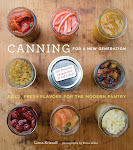 These loaves are mostly white flour, with 1/4 cup of whole wheat flour for flavor. The bug was impatient, so I cut into the funny-looking one before it had cooled, and it got a little gummy.
These loaves are mostly white flour, with 1/4 cup of whole wheat flour for flavor. The bug was impatient, so I cut into the funny-looking one before it had cooled, and it got a little gummy.In the Reinhart book, many of the recipes have you mixing the flour and salt together and adding them to the wetter ingredients (a starter or barm plus water, for example). I've found that technique problematic, because often it results in a stiffer dough than I think is right—and adding more water at the end is extremely annoying and difficult. In future, I'll go back to the usual way of adding the salt with the first cup or so of flour, and adding more flour gradually until it just feels right to me.
 The ugly loaves in front, variations on Reinhart's version of Poilâne bread, are 100% whole wheat (and they sure tasted like it). Good and sour, but very heavy and dense. I forgot about the baguettes in the oven, and they burnt a bit.
The ugly loaves in front, variations on Reinhart's version of Poilâne bread, are 100% whole wheat (and they sure tasted like it). Good and sour, but very heavy and dense. I forgot about the baguettes in the oven, and they burnt a bit. The baguette's crumb. This loaf was baked on a sheet pan because I have only one French bread pan (I was making four loaves at a time)—hence the flat bottom. Very chewy and sour, but I prefer the lighter texture of my normal, nonsourdough French loaf.
The baguette's crumb. This loaf was baked on a sheet pan because I have only one French bread pan (I was making four loaves at a time)—hence the flat bottom. Very chewy and sour, but I prefer the lighter texture of my normal, nonsourdough French loaf.The baguettes made excellent bread crumbs, incidentally, which I put on top of the most ridiculously complicated tuna noodle casserole ever. Look at this recipe! It's a tuna noodle casserole, for crying out loud! Yes, it was good, and maybe slightly more healthful than the canned-soup variety, but really not worth the kitchen mess and effort.
 This is the cinnamon crumb nut apple surprise quickbread from Rose Levy Beranbaum's The Bread Bible. Not a bread bread, but I was craving a slice of it to go with my afternoon Earl Grey. I took the remaining slices to Mr. Chalmers's office kitchen.
This is the cinnamon crumb nut apple surprise quickbread from Rose Levy Beranbaum's The Bread Bible. Not a bread bread, but I was craving a slice of it to go with my afternoon Earl Grey. I took the remaining slices to Mr. Chalmers's office kitchen. The apples are the surprise part, I guess.
The apples are the surprise part, I guess.I think my breads were better before I started reading the Beranbaum and Reinhart books and trying to learn how to make better bread, but I think I'll get to a point where the extra knowledge starts to pay off. A few factors might delay this: I'm no good at following directions, I'm forgetful, and I'm no good at keeping track of what I've done for future reference.







3 comments:
Liana, your sourdough looks awfully good to me. It will probably take about two weeks for a culture from scratch to develop a good balance. I've had no problem adding water later, though I prefer not to. Either press the dough out flat, dimple it, sprinkle on water, and knead it in, or knead it with very wet hands. I usually autolyse the flour and water and then add the salt and leaven. But I've also started by mixing the leaven with flour in a food processor and mixing salt with the rest of the flour, stirring them together and adding water. Or I mix the salt and flour and then mix water into a batter starter and combine them. It mostly depends on time and space considerations. Try sifting out some of the bran from the whole wheat or mixing in some bread flour. You may like the flavor balance better. Poilane, as I recall, used high-extraction flour, not 100% whole wheat.
Thank you! (And there's a letter to you in the mailstream as of this afternoon.) Yes, the Poilâne was supposed to use high-extraction flour, not regular whole wheat. I tried sifting the whole wheat King Arthur, but it all went through the sieve. Need a finer sieve, obviously, or coarser flour.
That's how I added the water toward the end: flattening the dough and sprinkling it on, etc.; it worked, it's just that it was a real pain. I figure if the dough's going to be that difficult I might as well be making bagels! (No food processor in these parts.)
I haven't yet tried autolysing the flour and water before adding the leaven, but from what I've read it makes sense to do so.
That starter is indeed looking better now; I took it out of the fridge a couple days ago and have been feeding it in preparation for round 2.
I use a fine sieve I got from Lehman's in Kidron, Ohio. It isn't in their catalogue but is often available in the store. Thers was from Croatia. www.bridgekitchenware.com carries the same thing from France and calls them Tamis sieves. It is worth looking at the website just to get an idea of them. But they are pricey. An easier solution is to mix whole wheat flour with regular flour. I think Dan Leader recommends a 3 regular to 1 whole wheat ratio. Time to go check my starter. I'm refreshing it.
Post a Comment